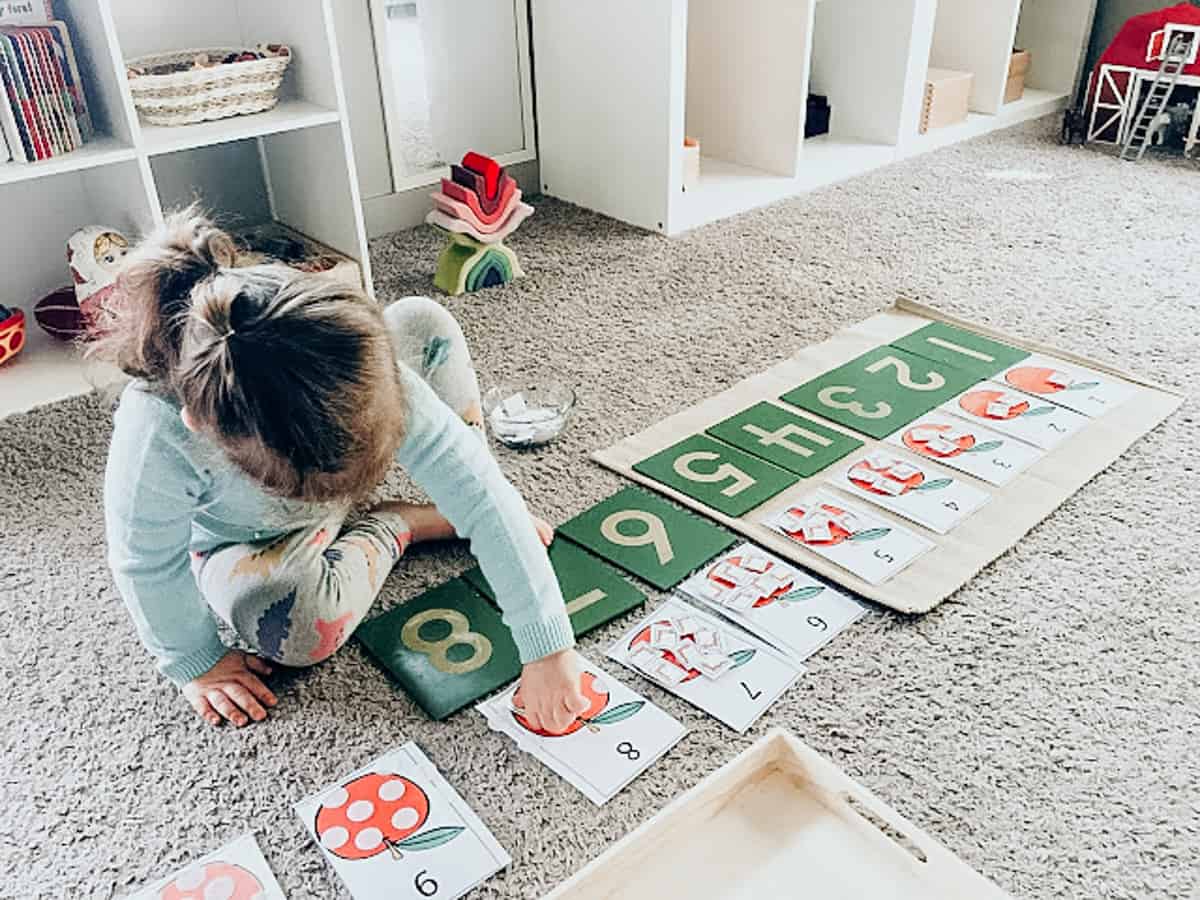
Disclosure of Material Connection: Some of the links in the post are “affiliate links.” This means if you click on the link and purchase the item, I will receive an affiliate commission. Amazon links are not affiliate links. You can read my full affiliate disclosure.
Montessori Math at Home
We also keep accessible an assortment of blocks for open-ended play. These materials reinforce concepts related to size, leverage, balance, weight, and geometry, and promote problem solving, creativity, and imagination. Below is an example using the Grimm's flower for some spring-inspired open-ended play, along with some knobless cylinders.

Montessori Math at Home: Shelf Work
The early math shelf work is derived from child-led interests and relevant topics and usually includes items we pull from around our home or online printables. This is such a great time to be a Montessori homeschooler or a homeschooler in general for several reasons, with one of them being the number of highly trained and experienced members of the community who share resources for free or for a small fee to inspire and support the success of the community as a whole. It's a very open, intelligent, and supportive group of educators and I've really enjoyed hearing/reading about others' experiences as well as sharing ours.
Other opportunities to discover math that go hand-in-hand in our home are songs and books. We try to include books that pair well with our current shelf work. Check out our bookshop lists for some examples of books that incorporate counting with music and/or art.
After some time spent repeating activities and reinforcing skills at this level, our preschooler graduated to her Montessori math materials, while continuing to show interest in her work with the materials previously discussed. Red and blue rods, sandpaper numerals, a spindle box, and a number recognition and quantity puzzle were introduced one at a time. After some time spent working with each, the sandpaper numerals especially have been incorporated into several other math activities. They have had a tremendous impact on our daughter's number recognition and number tracing skills. The spindle box was very useful for teaching the concept of zero as nothing. Below is an example of an extension of the sandpaper numerals that explores number recognition, tracing, number quantity, and one-to-one correspondence. It, like the number puzzle and other Montessori math materials, has a built-in control of error, meaning our daughter can self-correct if needed without the aid of a guide. It also uses worm pictures as manipulatives for the activity and our daughter is currently all about digging up worms during outdoor play so it's very enticing work.
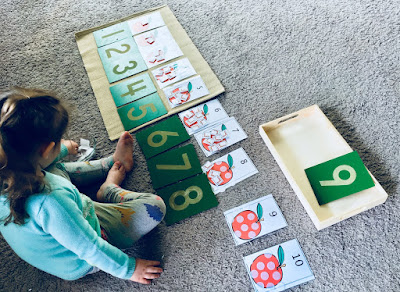
From here we will wrap up with odd and even quantities and the colored bead stair before moving on to introducing the beautiful golden beads and the decimal system. It's been a fun journey getting to this point and seeing our daughter's mastery of these skills blossom with each new day. She always looks very satisfied when she's able to complete a new work. The other day she grabbed a new spring-themed math tray off the shelf, laid it out on her mat, and paused to tell me she was happy before getting started. It meant a lot to me that she felt that way and wanted to express it. I hope she continues to feel like learning makes her happy. We hope you and your preschooler are enjoying some exciting new math activities as well.
*apple printable courtesy of Jady A
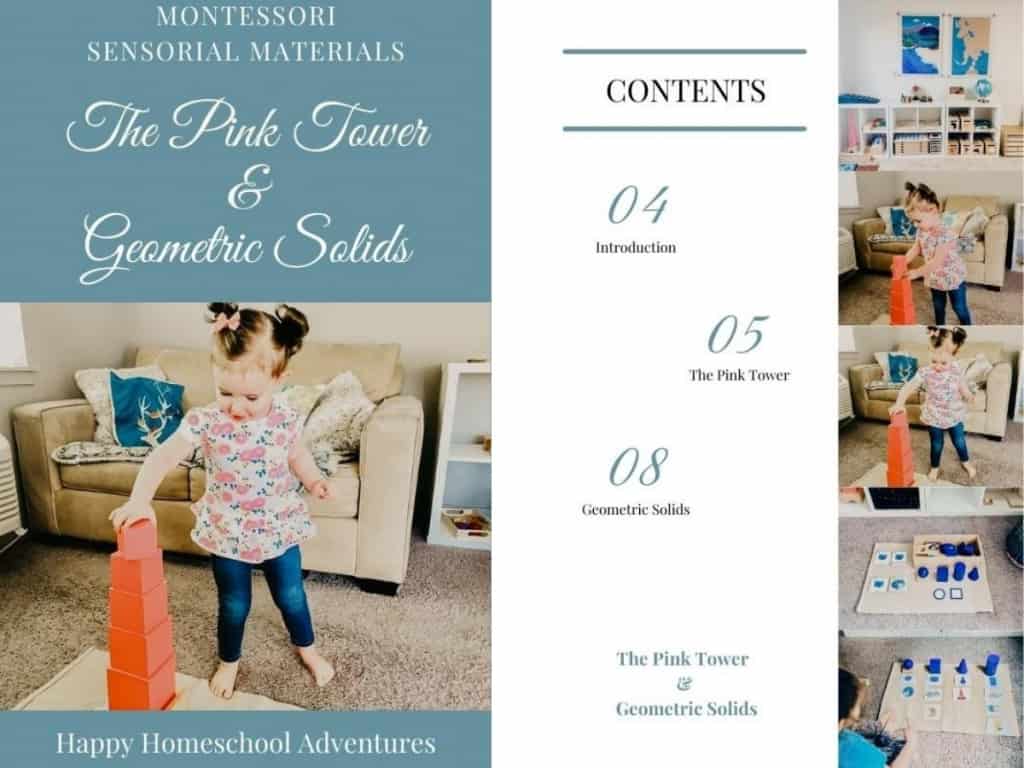
More Montessori Math at Home
Check out the Geometric Solids and Math: Concrete to Abstraction for more math inspiration.
If you're shopping for Sensorial materials, our The Best Sensorial Materials for Homeschool is a great guide. The pink tower is a family favorite.
Thanks for stopping by!
- Kristin
PIN FOR LATER
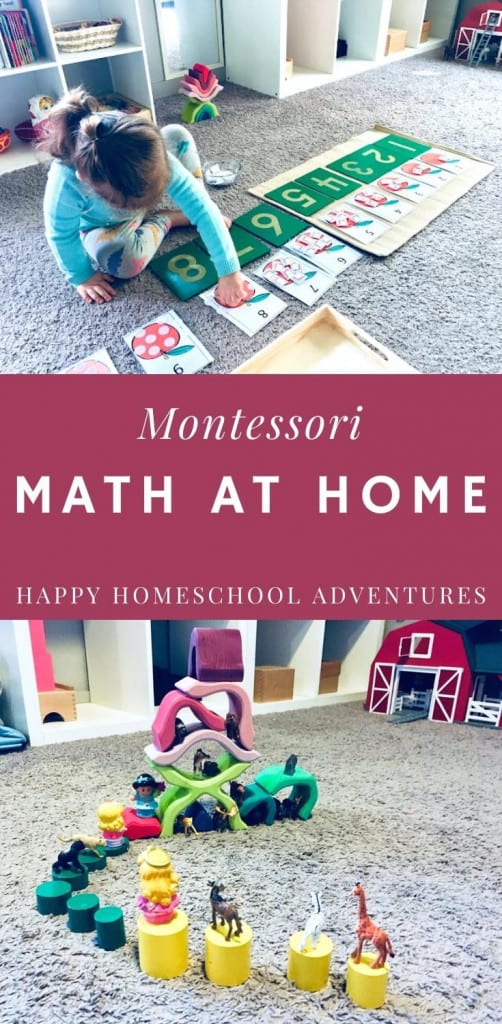

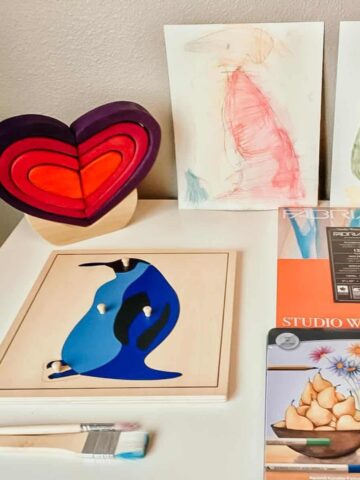
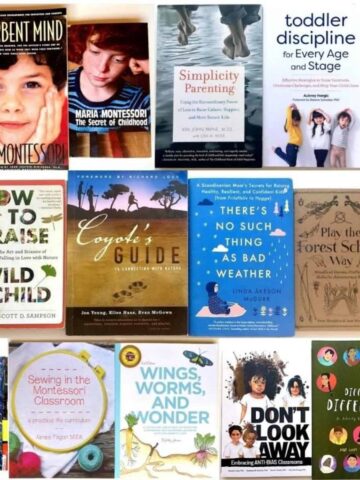
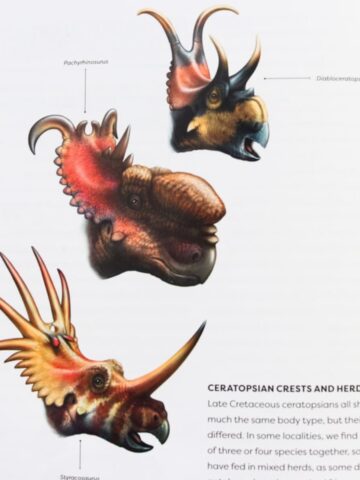
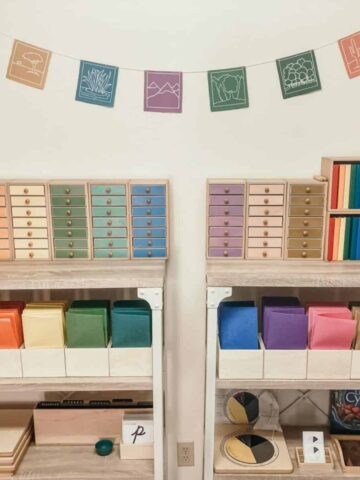
Leave a Reply